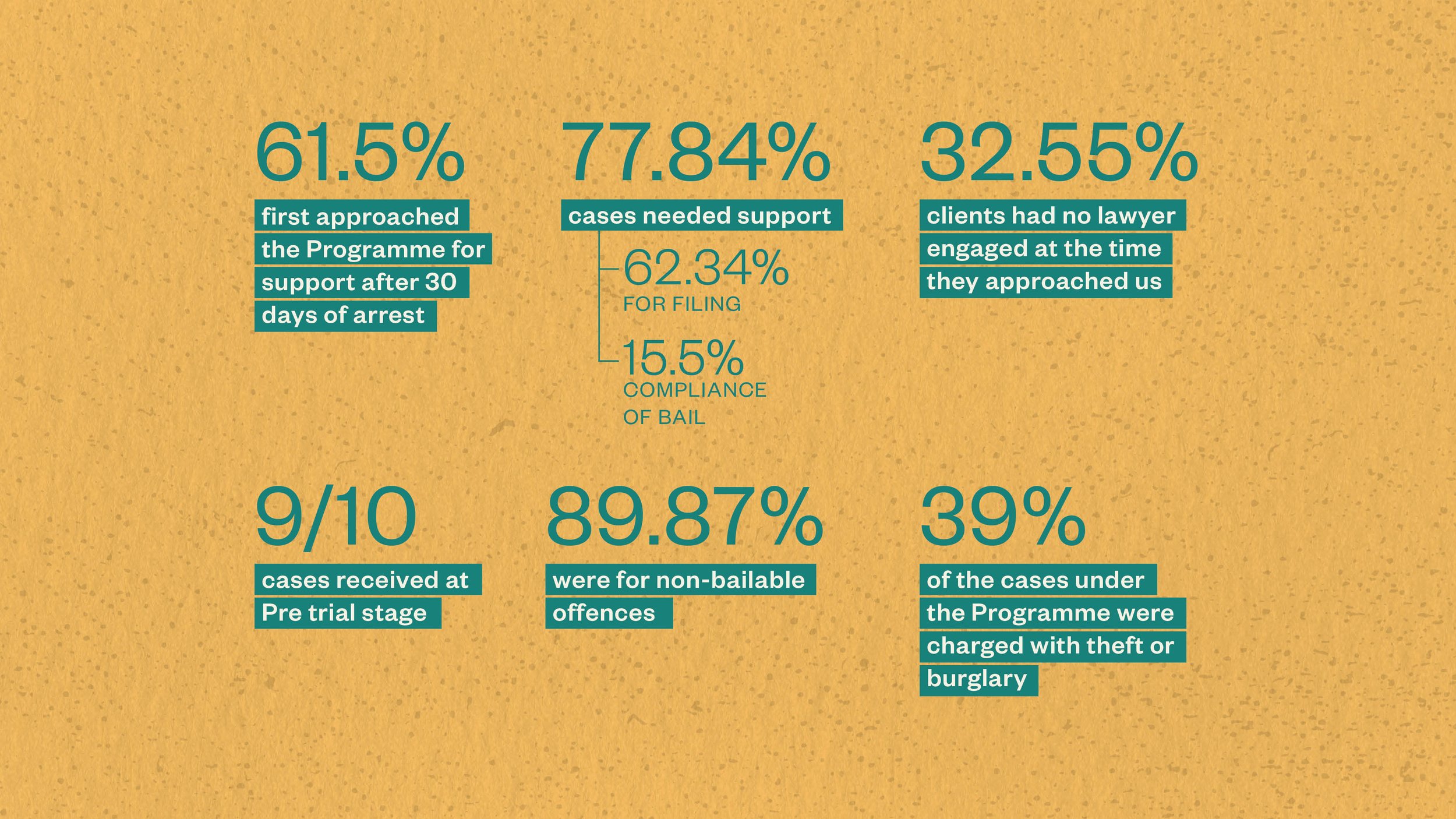In the period between 2018 to 2021, Fair Trial Fellowship Programme (Project 39A, National Law University Delhi) and Prayas (TISS Mumbai) reached out to 9570 undertrial prisoners across eight prisons in Maharashtra and facilitated release of 4504 undertrials by providing them legal representation (Programme). As part of their interventions, both organisations collected detailed data relevant to legal aid in the criminal justice system and analysed client and case data to empirically substantiate their learnings from the field.
This Report draws on the experience and learnings of the Fair Trial Fellowship Programme providing legal aid to undertrials in Yerwada (Pune) and Nagpur Prisons and Prayas doing the same in Mumbai, Thane, Taloja, Byculla, Kalyan, and Latur Prisons.
Access the report here.
The executive summary of the report can be accessed here.
Client Demographic:
The Programme reached out to 9,570 undertrial prisoners across 8 prisons. Analysis of clients’ demographic details provided on ground confirmation of multiple socio-economic vulnerabilities faced by undertrial prisoners. 54% of the undertrials who approached the Programme had not completed their secondary education; about 22% had no source of income while 72% earned less than 1.2 lakh per annum.
Impact and Outcome:
The programme facilitated release of 4,504 inmates (47% of the total outreach). The Programme’s experience reflected that consistent availability of social work fellows in prisons ensured greater acceptance of the Programme within prisons, with 81% of FTF clients and 92% of Prayas clients approaching the programme directly inside prisons.
In more than 50% of the cases under the Programme, clients sought legal representation through the District/Taluka legal services authorities, despite having access to a private lawyer. This indicated that reducing timelines for allocation of panel advocates and increasing their responsiveness to clients increased reliance on the state legal aid machinery.
The Programme’s interventions also demonstrate that a bail strategy and its execution attuned to the reality of the undertrial, result in more equitable bail conditions and higher probability of compliance with bail orders. Improving last mile coordination between courts, prisons and other institutions has also contributed to higher numbers of release from prison.



